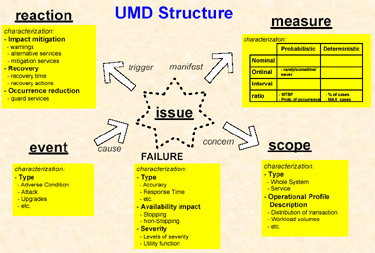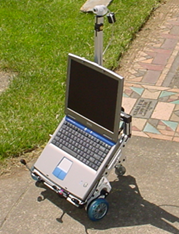 |
|||||
|
UMD provides a language for describing and reasoning about the dependability of an artifact. It was created at the University of Maryland by Paolo Donzelli, Victor Basilli, and Sima Asgari. Their project team has supplied us with modeling tools which will allow us to represent dependability issues relating to the artifact and its environment. The diagram above shows the main components of the UMD structure. Our goal will be to define the risks of leaving the operational envelope using UMD, and expand the definition to include actions which may help avoid problems and/or mitigate the impact of an artifact leaving its operational envelope. For a detailed description of the UMD language and tools go the HDCP Webiste and follow the
Dependability Models link.
iDAVE is a modeling language developed at USC by Barry Boehm, LiGuo Huang, Apurva Jain, and Ray Madachy. iDAVE (Information Dependability Attribute Value Estimation) is a model which allows users to reason about the return on investment when a given dependability attribute is successfully implemented on an artifact. We are currently investigating ways we might use iDAVE in our project to help decide whether it is worth while to expand the operational envelope of an artifact (when an undependable state is found), or if it is more cost effective simply to monitor the artifact's state watch for the undependable state. |
||||



